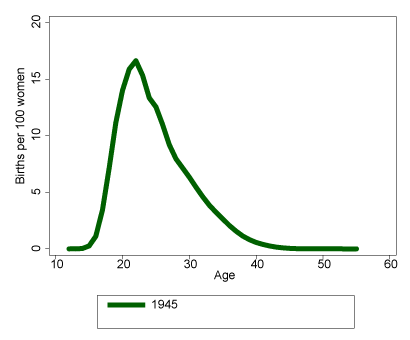The debate about tempo effects and their adjustments
Following its publication the Bongaarts-Feeney adjustment has generated a considerable debate about tempo effects in demographic estimation. Part of this discussion is rather technical and focuses on the assumptions underlying the tempo correction (several other tempo-adjusted measures of the period TFR have been developed as a result of that), and part of the debate revolves around the interpretation of tempo-adjusted measures. Even though Bongaarts and Feeney are careful not to claim that their measure is good estimator of cohort fertility, the comparisons that are made with cohort fertility in various validation exercises may lead us to forget that.
Lesthaeghe and Willems (1999) are among the authors who argue that no tempo-adjusted measure of period fertility is a reliable estimator the CFS under all circumstances. Using cohort fertility data for Belgium, they show that the decline in fertility rates is indeed driven by postponement of childbearing, but also that it is only partly recuperated later in life. In other words, fertility postponed is also fertility foregone and any change in tempo will usually imply a change in quantum as well. In Figure 5, we have carried out a similar exercise for Germany. As is the case for most high income countries, younger cohorts of women postpone childbearing and recuperate some of that later in life (this phenomenon is captured by shift of the ASFR curves along the x-axis). As long as the area under the curves stays constant, the TFR will not change. However, the plot clearly illustrates that most postponed fertility is never recuperated.
 Click on the arrows on the right hand side of the graphic to see the ASFRs for subsequent birth cohorts.
Click on the arrows on the right hand side of the graphic to see the ASFRs for subsequent birth cohorts.

Figure 4: Age-specific fertility for cohorts born between 1945 and 1985
Source: Human Fertility Database (www.humanfertility.org). Max Planck Institute for Demographic Research (Germany) and Vienna Institute of Demography (Austria). Data downloaded on 15/5/2013.
The debate about tempo adjustments in period fertility measures continues unabated. In a recent contribution, Ní Bhrolcháin (2011) recently argued that forecasting methods may be more useful if we wish to understand the CFS of incomplete cohorts. The inference from current period rates will always remain an approximation at best.